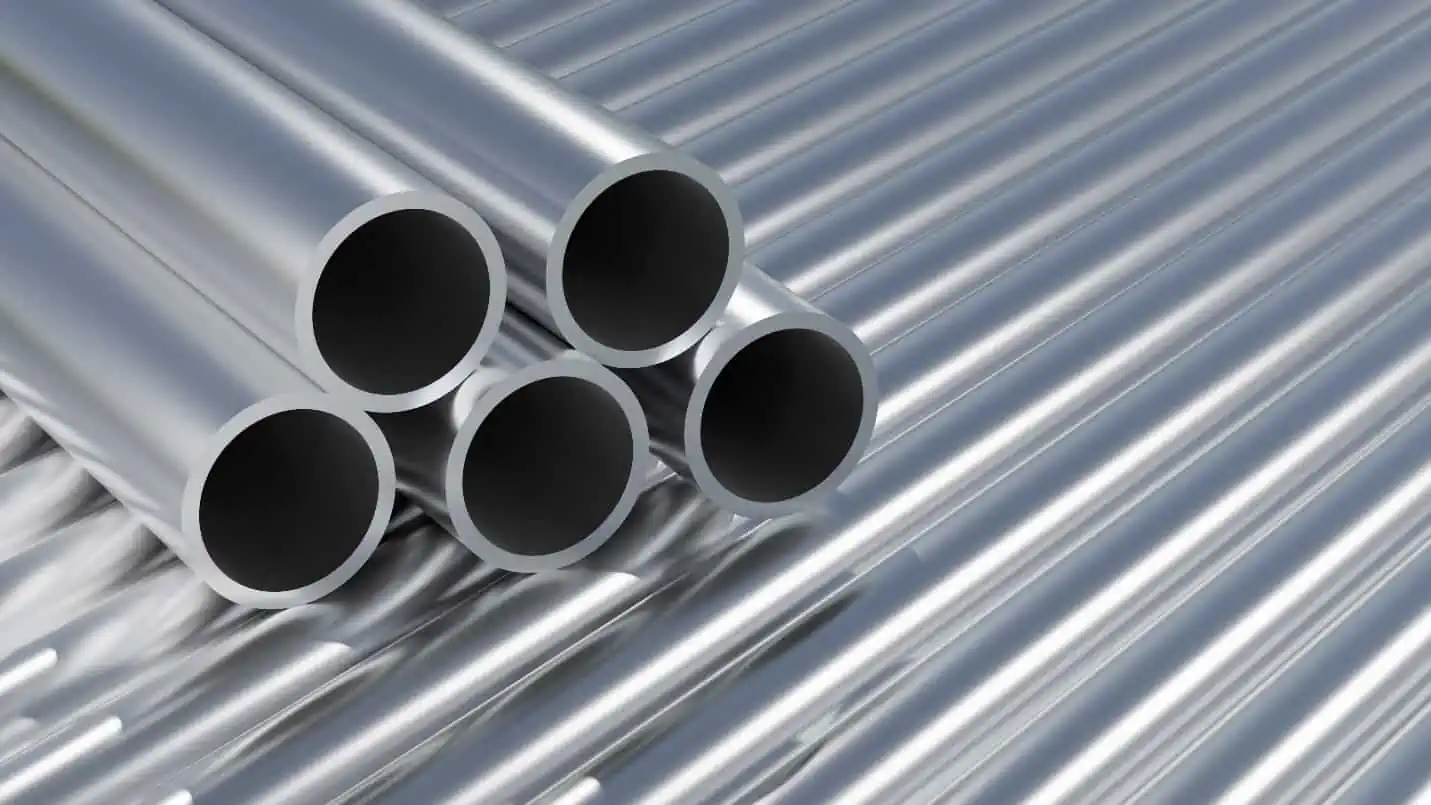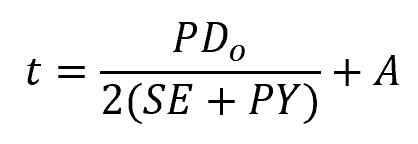When designing piping systems, it is crucial to take into account the pipe’s thickness, as it has a direct impact on the system’s durability, strength, and ability to handle pressure. Based on their nominal size, pipes are manufactured in a range of thicknesses, commonly referred to as schedules, that adhere to specific standards established by industry organizations such as the American National Standards Institute (ANSI) or the American Society for Testing and Materials (ASTM).

This article focuses on the thickness of Schedule 80 pipes, which are make an excellent choice where robustness and suitability for high-pressure capability are requirements for the application.
Thickness Of Schedule 80 Pipe
Schedule 80 pipes refer to a relatively strong and durable class of pipes that are specifically designed to withstand higher pressures, corrosive environments, or heavier loads compared to standard pipes. These pipes are commonly employed in industries such as oil and gas, chemical processing, power generation, and water treatment.
The thickness of a Schedule 80 pipe is not a fixed value, as it depends on the nominal pipe size.

Elevate Your Engineering With Excel
Advance in Excel with engineering-focused training that equips you with the skills to streamline projects and accelerate your career.
In North America, pipe sizes are typically denoted by two non-dimensional values: Nominal Pipe Size (NPS) and schedule (SCH). NPS is a standardized label indicating the approximate pipe diameter, while schedule relates to the pipe’s wall thickness.

It is important to note that both the NPS and schedule are not indicative of the actual physical measurements of the pipe. Rather, they function as practical references for pipe sizing, allowing for consistent communication and interchangeability of pipes and fittings among various manufacturers and applications. To determine the precise values of the pipe’s diameter and wall thickness based on NPS and schedule, reference tables developed by standardization organizations can be consulted.
Steel pipes are defined by the ASME B36.10M standard, while PVC pipes adhere to the ASTM D 1785 standard. In general, piping standards allow pipe manufacturers a fabrication mill tolerance of 12.5% on the wall thickness.
Thickness Of Schedule 80 Carbon And Stainless Steel Pipes
The following tables show the wall thickness of standard Schedule 80 carbon and stainless steel pipes according to the ASME B36.10M standard. The tables include nominal pipe sizes ranging from 1/8” to 24”.
Note that stainless steel piping schedules typically align with Carbon Steel piping schedules, with the distinction being that stainless steel schedules are denoted by the suffix “S”. Therefore, Schedule 80 indicates a carbon steel pipe, while Schedule 80S denotes a stainless steel pipe.
Thickness Of Schedule 80 Carbon And Stainless Steel Pipes In Millimeters
Thickness Of Schedule 80 Carbon And Stainless Steel Pipes In Inches
Thickness Of Schedule 80 PVC Pipes
The following tables show the wall thickness of standard Schedule 80 PVC pipes according to the ASTM D 1785 standard. The tables include nominal pipe sizes ranging from 1/8” to 24”.
Thickness Of Schedule 80 PVC Pipes In Millimeters
Thickness Of Schedule 80 PVC Pipes In Inches
Schedule 80 Pipe Pressure Rating
The schedule and thickness of a pipe are closely related to its stress-bearing capacity. Hence, pipe schedule also serves as an indicator of the pipe material’s ability to endure internal pressure and pressure surges.
In fact, the schedule number can be approximately obtained from the ratio between the service pressure and the allowable stress on the pipe material, as shown in the formula:

Where:
- SCH = schedule number [unitless]
- P = maximum allowable internal pressure [psig]
- S = allowable stress on the pipe material [psi]
Hence, for a Schedule 80 mild steel pipe with an ultimate tensile strength of 65300 psi, the maximum allowable internal pressure can be approximated to be equal to 5224 psi, as shown in the equation:

However, a more accurate way to relate a piping system’s design pressure to the required pipe wall thickness is through the following formula, provided in ASME B31.3:

Where:
- t = Required wall thickness, inches
- P = Design pressure, psi
- Do = Outside diameter of the pipe [in]
- A = Corrosion allowance [in]
- S = Allowable stress at design temperature [psi]
- E = Longitudinal-joint quality factor [unitless]
- Y = Wall thickness correction factor [unitless]
The corrosion allowance, allowable stress, longitudinal joint quality factor, and wall thickness correction factor can all be found in ASME B31.3.
The above formula infers that the pressure rating is influenced not only by the pipe dimensions but also by the temperature, which impacts the allowable stress value. The following tables display the allowable working pressures for various types of Schedule 80 pipes at different design temperatures.
Pressure Rating of Schedule 80 Stainless Steel Pipes
The following table shows the maximum working pressure rating of standard Schedule 80 Stainless Steel pipes according to the ASME B36.10. The table includes nominal pipe sizes ranging from 1” to 10”.
Pressure Rating Of Schedule 80 Carbon Steel Pipes
The following table shows the maximum working pressure rating of standard Schedule 80 Carbon Steel pipes according to the ASME B36.10 standard. The table includes nominal pipe sizes ranging from 1” to 10”.
Pressure Rating Of Schedule 80 PVC Pipes
The following table shows the maximum working pressure rating of standard Schedule 80 PVC pipes according to the ASTM D 1785 standard. The table includes nominal pipe sizes ranging from 1/8” to 24”.
Schedule 80 vs Schedule 40 Pipes
As the schedule number increases, the pipe’s wall thickness and pressure rating also increase. However, the outside diameter remains constant for a given NPS, resulting in a reduced inside diameter as the pipe schedule increases.
Following this guideline, Schedule 40 pipes have relatively thinner wall thickness compared to Schedule 80 pipes. Hence, Schedule 80 pipes have higher pressure ratings, enabling them to withstand higher levels of internal pressure without deformation or bursting. The thicker walls of Schedule 80 pipes also provide increased strength and durability, making them more resistant to bending, impact, and external forces.
In various applications, Schedule 40 is the standard and most commonly used pipe schedule. It is suitable for plumbing, residential construction, and other general-purpose uses where moderate pressure and strength requirements exist.
On the other hand, Schedule 80 pipes are specifically designed to withstand higher pressures, corrosive environments, and heavier loads. They are commonly used in industries such as oil and gas, chemical processing, power generation, and water treatment.
In general, Schedule 40 pipes are less expensive than Schedule 80 pipes due to their thinner walls, which require fewer materials.
